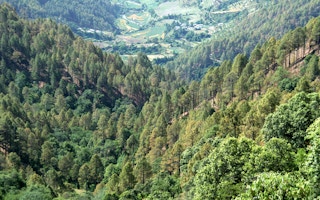The government’s recent report announcing an increase in forest cover looks more like a case of the state agency playing the slippery slope of statistics.
Wednesday’s landslide in Maharashtra’s Ambegaon and last year’s flash floods and landslides in Uttarakhand may in reality indicate a trend likely to recur across the country - as over the years huge tracts of ‘dense’ forests having the capacity to hold soil and protect slopes have been lost.
Most of the increase in forest cover has been in ‘open forest area’. This is non-dense forest, barely enough to be considered a green patch that may reap ecological benefits decades later.
Forest Survey of India (FSI) records show the country increased its forest cover by 57,791 sq km in past 20 years but 45,376 sq km of it is ‘open forest area’ category.
“
Forest Survey of India records show the country increased its forest cover by 57,791 sq km in past 20 years but 45,376 sq km of it is ‘open forest area’ category
Environmentalists call it a recipe for disaster as India keeps clearing ‘dense’ forest cover having the capacity to hold soil/ protect the slopes for various projects.
Referring to Pune and Uttarakhand disasters, environmentalist and CSE chief Sunita Narain said, “It’s become far more important to protect forests and mountains. Climate change will see more extreme weather events in future. We have to adopt new technology to construct roads and implement other unavoidable projects so that slopes of the mountains are not affected.”
She emphasised that the indiscriminate clearing of forests was a matter of grave concern. The environment ministry’s records show impending loss of dense cover in many parts, mostly in mineral-rich Jharkhand, Chhattisgarh, Madhya Pradesh and Odisha.
While 2.43 lakh ha of forests had been cleared for various projects under the UPA regime (2004-13), proposals to clear 3.30 lakh ha of forests are pending before the new government. This, in addition to the total 11,89,294 ha of forest land diverted to for 23,511 projects in different states since 1980.
Afforestation efforts by states and UTs across 20.7 lakh ha over the past 14 years are not seen as being beneficial in the short-term. Compensating loss of old dense forest area with new plantation and roadside trees is not seen as a solution.
New forest covers will take ages before becoming the stabilising factor that will prevent natural disasters. Forest campaigner of Greenpeace India Nandikesh Sivalingam said, “Forests are a major stabilizing component that protect soil and water and reduce floods and landslides. Deforestation and forest degradation due to reckless infrastructure development, agriculture and mining are primary causes for landslides.”
Questioning the environment ministry’s current view on faster clearances for infrastructure projects, he said, “Increasing frequency of clearances makes it clear that mismanagement of environment is damaging not only the economy but also human lives”.
Disaster management expert Sq Ldr (retd) Krishan Mitroo agrees, “Time has come to stop playing with nature. If you want to go for development, secure the hills first by adopting scientific methods.”








